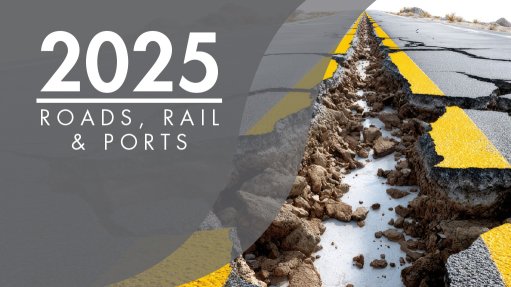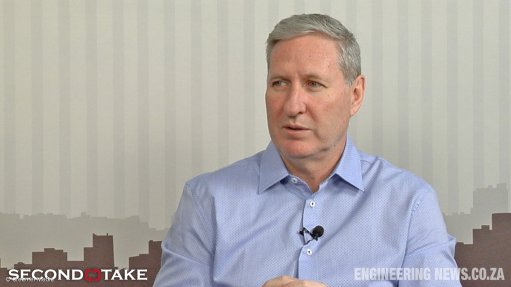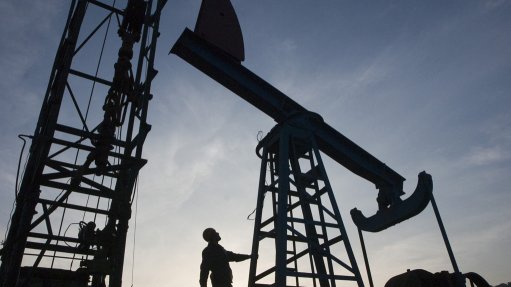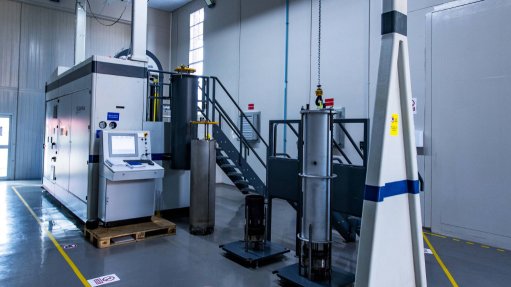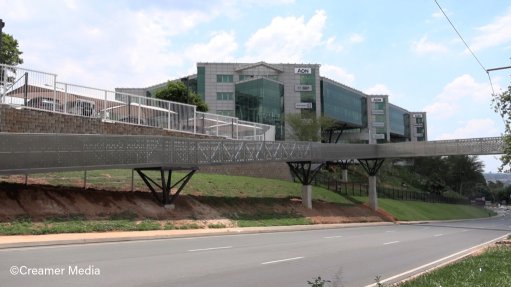Global steel demand to decline by a further 0.9% in 2024 – worldsteel
The World Steel Association (worldsteel) expects global steel demand to decrease by 0.9% to 1.75-billion tonnes this year.
“2024 has been a difficult year for global steel demand as the global manufacturing sector continued to grapple with persistent headwinds such as declining household purchasing power, aggressive monetary tightening, and escalating geopolitical uncertainties.
“The ongoing weakness in housing construction, which is driven by tight financing conditions and high costs, has further contributed to the sluggish demand for steel,” German Steel Association MD and worldsteel economics committee chairperson Dr Martin Theuringer said.
In an update of its Short Range Outlook (SRO) for 2024 and 2025, released on October 14, the industry body said that, after three years of decline, a broad-based recovery is expected across the world, excluding China, in 2025.
Global steel demand is forecast to rebound by 1.2% to reach 1.77-billion tonnes next year.
Theuringer noted that worldsteel was making significant downward revisions to its 2024 steel demand outlook for most major economies, including China, reflecting the persistent weakness in manufacturing alongside lingering global economic headwinds.
“We now anticipate a notable decline in steel demand in China and most major developed economies. In stark contrast, India is expected to maintain its strong momentum, with robust growth in steel demand projected for both 2024 and 2025,” he pointed out.
He explained that most other major developing economies are expected to witness a rebound in steel demand this year, recovering from the slowdown experienced in 2022/23.
“Despite ongoing challenges posed by factors like lingering effects of monetary tightening, elevated costs, limited affordability and geopolitical uncertainties, we are cautiously optimistic that global steel demand will enter a phase of broad-based moderate growth in 2025,” Theuringer said.
He pointed out that the key determinants of the global steel demand outlook for 2025/26 would be the progress made in the stabilisation of China’s real estate sector, effectiveness of interest rate adjustments in spurring private consumption and business investment, and the trajectory of infrastructure spending dedicated to decarbonisation and digital transformation across major global economies.
worldsteel’s SRO indicated that an ongoing downturn in the Chinese real estate sector is expected to dominate steel demand in China, resulting in a 3% decline this year and a further 1% in 2025.
However, the association acknowledged an upside risk to its 2025 forecast.
“There is a growing possibility of more substantial government intervention and support for the real economy, which could bolster Chinese steel demand in 2025.
Steel demand in the developing world excluding China is projected to grow by 3.5% in 2024 and 4.2% in 2025, driven by India’s robust growth and a rebound in other major emerging economies,” worldsteel said.
The SRO reveals that India has emerged as the strongest driver of steel demand growth since 2021, with worldsteel expecting this trend to continue.
“We are maintaining our robust growth projections for India, anticipating an 8% increase in steel demand over 2024 and 2025. This expansion is fuelled by growth across all steel-consuming sectors, especially by continued strong growth in infrastructure investments,” the association said.
Further, steel demand in other emerging economies, such as the Middle East and North Africa and Association of Southeast Asian Nations regions, were expected to rebound this year after a significant slowdown over 2022/23.
Overall, worldsteel expects the developed world to experience a 2% decrease in steel demand this year, as major steel-using economies such as the US, Japan, Korea and Germany face significant declines.
However, the association expressed optimism for 2025, with a projected growth of 1.9% in developed world steel demand. This anticipated recovery is driven by the long-awaited upturn in steel demand in the EU, along with modest recoveries in the US and Japan.
SECTOR TRENDS
worldsteel said there was persistent weakness in global manufacturing activity, noting that its earlier projection of a continued recovery in global manufacturing activity this year had not materialised.
“Instead, the sector experienced a downturn in the third quarter, diverging from the initial growth observed in the first months of the year and the positive signals from leading indicators. We observed that a significant contributor to the manufacturing slowdown is the ongoing reluctance of households and businesses to invest in durable goods,” the association said.
The SRO said that high costs, economic uncertainty and tighter financing conditions had created a “wait-and-see” attitude, delaying spending decisions.
“The lingering effects of the past three years of inflation have eroded the purchasing power of many middle- and lower-income families, further dampening demand for manufactured goods,” worldsteel said.
Despite these challenges, the association believed that there were reasons for cautious optimism regarding a potential recovery in global manufacturing next year.
“The resilience of the global economy, easing of financing conditions, pent-up demand and increases in real income seen in major economies such as the eurozone and Japan should support a recovery in private consumption and investments, and hence a recovery in global manufacturing activity in 2025,” worldsteel said.
The association noted, however, that housing construction activity had remained subdued in most major markets throughout this year, continuing to weigh on steel demand, especially in key regions such as China, the US, the EU, Japan and Korea.
After a period of robust growth fuelled by historically low interest rates, housing activity experienced a sharp decline in 2023 across many major economies as central banks aggressively raised borrowing costs to combat soaring inflation.
This slowdown has persisted into 2024, impacting on the construction sector and, consequently, steel demand.
However, the SRO pointed to a meaningful recovery in residential construction in the EU, the US and Korea, which is expected to begin from 2025 onwards as financing conditions ease.
“After an exceptional year of double-digit growth across major auto-producing nations in 2023, the automotive sector is bracing for a significant slowdown in 2024. Light vehicle production forecasts are being revised downwards across the board due to mounting concerns over rising inventories and a deceleration in battery electric vehicle sales in key markets,” worldsteel noted.
The association pointed out that this shift stood in stark contrast to the previous year’s robust performance, highlighting the industry’s vulnerability to evolving market dynamics and potential challenges ahead.
“We expect global light vehicle production to show modest growth in 2025,” it said.
The SRO went on to note that robust investment in manufacturing facilities and public infrastructure had underpinned global steel demand throughout 2023 and into this year, with major economies around the globe having sustained growth in these investment areas, building on the momentum from 2023.
“These strategic investments aim to enhance productivity, stimulate job creation, accelerate climate change mitigation efforts, and secure a leading position in the industries of the future.
“Escalating construction costs, labour shortages and mounting fiscal debt may pose significant challenges for many major economies, potentially limiting further growth in these investment areas in the near term,” worldsteel said.
The association pointed out that the green transition of the world economy was one of the major factors behind the strength in public infrastructure investments, as it necessitated an economic transformation of immense scale and complexity.
As such, the SRO forecast that steel demand for expanding global electricity grids was likely to double by the end of the decade, reaching about 20-million tonnes a year, a substantial increase from the current pace of 10-million tonnes a year.
“We estimate that expanding global renewable-energy generation capacity and connecting it to demand centres will necessitate a steel demand increase of approximately 40-million tonnes by the end of the decade.
“This is likely to give quite a noticeable support to overall steel demand in both major developing economies such as China and India, and developed economies, especially Europe and North America,” worldsteel said.
Article Enquiry
Email Article
Save Article
Feedback
To advertise email advertising@creamermedia.co.za or click here
Comments
Announcements
What's On
Subscribe to improve your user experience...
Option 1 (equivalent of R125 a month):
Receive a weekly copy of Creamer Media's Engineering News & Mining Weekly magazine
(print copy for those in South Africa and e-magazine for those outside of South Africa)
Receive daily email newsletters
Access to full search results
Access archive of magazine back copies
Access to Projects in Progress
Access to ONE Research Report of your choice in PDF format
Option 2 (equivalent of R375 a month):
All benefits from Option 1
PLUS
Access to Creamer Media's Research Channel Africa for ALL Research Reports, in PDF format, on various industrial and mining sectors
including Electricity; Water; Energy Transition; Hydrogen; Roads, Rail and Ports; Coal; Gold; Platinum; Battery Metals; etc.
Already a subscriber?
Forgotten your password?
Receive weekly copy of Creamer Media's Engineering News & Mining Weekly magazine (print copy for those in South Africa and e-magazine for those outside of South Africa)
➕
Recieve daily email newsletters
➕
Access to full search results
➕
Access archive of magazine back copies
➕
Access to Projects in Progress
➕
Access to ONE Research Report of your choice in PDF format
RESEARCH CHANNEL AFRICA
R4500 (equivalent of R375 a month)
SUBSCRIBEAll benefits from Option 1
➕
Access to Creamer Media's Research Channel Africa for ALL Research Reports on various industrial and mining sectors, in PDF format, including on:
Electricity
➕
Water
➕
Energy Transition
➕
Hydrogen
➕
Roads, Rail and Ports
➕
Coal
➕
Gold
➕
Platinum
➕
Battery Metals
➕
etc.
Receive all benefits from Option 1 or Option 2 delivered to numerous people at your company
➕
Multiple User names and Passwords for simultaneous log-ins
➕
Intranet integration access to all in your organisation







